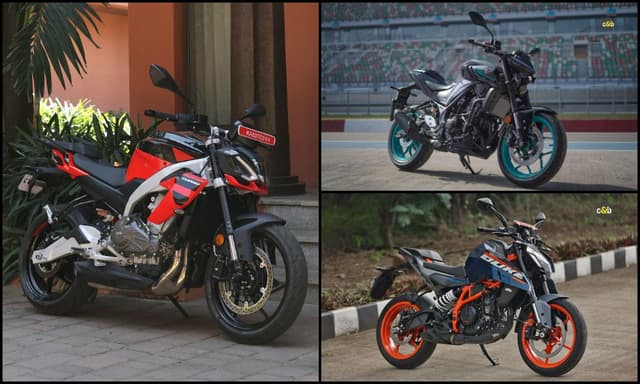How GST Impacted Automobile Prices In India

Highlights
The automobile industry in India has a significant market in manufacturing a huge number of cars and bikes every year due to India's huge population. Well, this article is all you need to read to know how automobile prices are affected by GST in India.
Before we dive into change of prices due to GST, Here are the Pre-GST tax laws:
|
Category |
Excise |
*NCCD +auto cess |
VAT |
Total |
|
<1200cc (Small cars) |
12.50% |
1.1% |
14% |
28% |
|
1200cc to 1500cc (mid-size cars) |
24% |
1.1% |
14% |
39% |
|
>1500cc (Luxury cars) |
27% |
1.1% |
14% |
42% |
|
>1500cc, ground clearance >170mm (SUV) |
30% |
1.1% |
14% |
45% |
Road Tax and Motor Vehicle Tax are not included in the table because they are state based taxes.
The taxation system before GST was too high, i.e., the tax had to be paid at multiple stages of production until the vehicle is purchased by someone. Due to this the customer had to pay tax on the already paid tax.
So before GST was implied there were 2 major type of tax components-
- The Central Sales Tax(CST)
- Value Added Tax(VAT)
Some categories of vehicles were exempt from National Calamity Contingent Duty/Auto-cess like the 3-wheelers, EVs, hydrogen or fuel cell technology vehicles, taxis, ambulances, vehicles of physically disabled persons etc.
Now that you've got a little idea about pre-GST regime, Let's talk about post-GST impact on prices:
|
Vehicle description |
GST Rate |
Cess |
|
Transport Motor vehicles with max capacity of 13 People |
28% |
15% |
|
Vehicles with less than 1200cc engine capacity and length 4000 mm excluding three-wheelers, ambulances. |
28% |
15% |
|
CNG, Petrol, LPG vehicles with 4000mm length and1200cc engine capacity. |
28% |
1% |
|
Diesel vehicles with 1500cc engine and 4000mm length. |
28% |
3% |
|
Vehicles with 1500 cc engine. |
18% |
17% |
|
Vehicles with 1500cc engine except the S. No 52B specified vehicles. |
18% |
20% |
|
SUVs and other utility vehicles with 1500 cc engine. |
18% |
22% |
|
Used vehicles, ambulances and EVs. |
18% |
- |
|
Refrigerated Vehicles. |
18% |
- |
|
Vehicles with special purpose |
18% |
- |
|
Bio-fuel Vehicles with max capacity of 10, excluding public buses. |
28% |
- |
|
Passenger-transport vehicles, racing cars, station wagons etc., except physically handicapped person cars. |
28% |
- |
|
Transport vehicles for non-refrigerated goods |
28% |
- |
Cars are divided in total of 5 categories for GST-:
- Small Cars - GST on cars like the Tata Tiago, Maruti Suzuki Swift, etc., is now 10% less compared to pre-GST era. It has been changed from 28% to 18%.

- Mid-size Cars - GST rates on mid-sized cars like Honda Amaze, Tata Nexon have been reduced to 18% i.e. a difference of 11%.

- Luxury Cars- The tax deduction on luxury cars like Land Rover Discovery, Range Rover Sport etc. is 14% and are taxed at 28% GST.

Photo Credit: en.wikipedia.org
- SUVs - SUVs have a car GST rate of 28% with a 17% reduction in the taxation rates.

Photo Credit: en.wikipedia.org
- Electric Vehicles- GST on EVs is just a minimal 5% now.

Photo Credit: nexonev.tatamotors.com
| Segment | GST | Cess |
| <1200cc(Small cars) | 18% | 1% |
| 1,200 -1,500cc (Mid-size cars) | 18% | 3% |
| >1500cc(Large cars) | 28% | 17% |
| >1500cc(SUVs) | 28% | 22% |
| Electric Cars | 5% | Nil |
The GST rate effects on cars are helpful to users using small cars like the Datsun Go, Brio etc., because they are charged a low 1% Cess on the reduced 18% GST. Bikes and scooters with engine capacity ranging from 150 to 180cc have 18% GST plus a 3% Cess. The bikes with 350-500 cc engine like Royal Enfield 500CC or Harley Davidson now have GST rate of 28% + 17% Cess. Large and luxury vehicles such as aircrafts, personal jets, etc., now have 28% GST + 15% Cess. The Warranties and complimentary services are now taxable now .
Last Updated on March 29, 2022
Related Articles
Latest News
- Home
- News
- Electric Mobility
- How GST Impacted Automobile Prices In India













